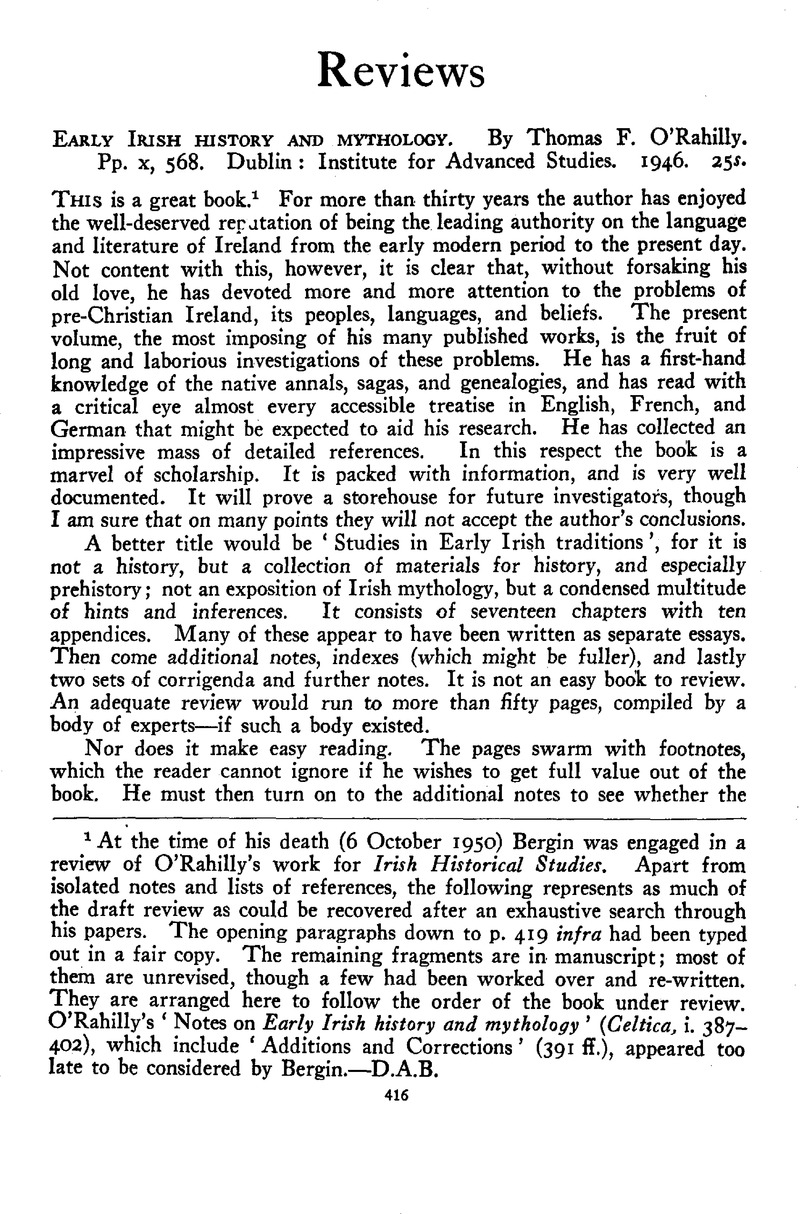No CrossRef data available.
Published online by Cambridge University Press: 28 July 2016

1 At the time of his death (6 October 1950) Bergin was engaged in a review of O’Rahilly’s work for Irish HistoricalStudies. Apart from isolated notes and lists of references, the following represents as much of the draft review as could be recovered after an exhaustive search through his papers. The opening paragraphs down to p. 419 infra had been typed out in a fair copy. The remaining fragments are in manuscript; most of them are unrevised, though a few had been worked over and re-written. They are arranged here to follow the order of the book under review. O’Rahilly’s ‘Notes on Early Irish history and mythology’ (Celtica, i. 387-402), which include ‘Additions and Corrections’ (391 ff.), appeared too late to be considered by Bergin.—D.A.B.
2 There are slaves and slaves. When African slaves were sold in America their masters had no reason to learn the language of a class whose culture was far below their own. Very different was the standing of Greek slaves in Rome.
3 According to a note on p. 3, one of the goddesses, Boand, the deified River Boyne, ‘was often regarded as possessing bovine shape’. (No reference to such a belief is given.) The statement that ‘ *Bou-vindā is a co-ordinate (or dvandva) compound’ is inaccurate. The name is translated in the text ‘cow-white (goddess) ’; ‘cow-white’ is no more a dvandva than ‘snow-white’. Examples of the real dvandva (= ‘pair’) are given on p. 461, where instead of exposing Pedersen’s erroneous explanation of gaisced, it would have been more scholarly to refer to Ascoli, Gloss. Palaeohibernicum 442—and indeed to O’Mulconry 681.
4 TBC2 3658.
5 Echtra Nerai, RC x 226 (F. had five chessmen in his fist as he struck B).
6 Mac Da Thó, who presides at a feast in the most dramatic of the sagas, is also god of war and lord of the Otherworld Feast (pp. 122 and 485). One of his guests is Fergus mac Roich, who is also the Other-world deity (p. 68).
7 Met. Dinds., iv. 94.